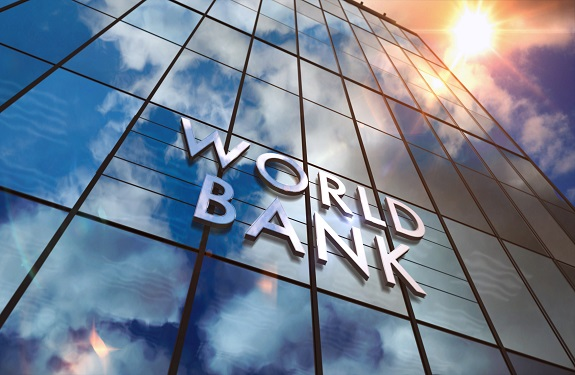What will the Financial Intermediary Fund for Pandemic Prevention, Preparedness and Response look like?
About the event:
Backed by the G20 countries and others a new financial intermediary fund (FIF) to finance pandemic prevention, preparedness and response (PPR) has been officially established by the FIF Governing Board at its inaugural meeting 8-9 September 2022.
After several months of negotiations, a new Financial intermediary Fund for Pandemic Prevention, Preparedness and Response has been established at the World Bank last week.
What is the purpose of the FIF?
Focussing on low-and middle-income countries, the fund aims at strengthening capacities to prevent, prepare and respond to future pandemics at national, regional, and global level. In particular, the FIF can finance countries’ capacity for laboratory systems, disease surveillance, emergency communication and management, community engagement and health workforce. Beyond country support, the FIF will assist in strengthening efforts on a regional and global level to share epidemiological data, coordinate procurement for medical and non-medical countermeasures and harmonize regulatory measures. The FIF can support peer-to-peer learning, provide targeted technical assistance, and help with the systematic monitoring of PPR capacities.
World Bank Group President David Malpass highlighted “We welcome the broad support from the international community for this new, multilateral financial intermediary fund at the World Bank to help low- and middle-income countries and regions become better prepared for global health crises and are pleased to have been able to proceed quickly in establishing the fund.”
How is the FIF structured?
While the World Bank serves as the trustee of the FIF and hosts the Secretariat, the World Health Organization (WHO) will assume a central role in providing technical leadership to the FIF, e.g., by seconding technical staff to the Secretariat of the FIF. A Governing Board will set the overall work program and make funding decisions. A key discussion point in setting up the FIF was whether the governance structure would allow for an equal decision making of donor and recipients countries as well as non-state actors. Ultimately, it was decided that the Governing Board includes equal representation of donors and implementing country governments, as well as representatives from foundations and civil society organizations. It will also appoint a Technical Advisory Panel, chaired by WHO, to assess and make recommendations on the technical merits of proposals for funding. The first calls for proposals for investments to be funded by the FIF will open already in November 2022.
WHO Director-General, Dr Tedros Adhanom Ghebreyesus confirmed the role of WHO in the FIF: “WHO looks forward to fulfilling its technical leadership role in advising the FIF Board on where to make the most effective investments to protect health, especially in low- and middle-income countries.”
How is the FIF funded?
With these ambitious goals in mind, a central question of any fund is its financing. Following the example of other intermediary funds, the FIF will pool investment of public and private sources. With Australia, Canada, China, the European Commission, France, Germany, India, Indonesia, Italy, Japan, Republic of Korea, New Zealand, Norway, Singapore, South Africa, Spain, the United Arab Emirates, the United Kingdom, the United States, the Bill & Melinda Gates Foundation, the Rockefeller Foundation, and Wellcome Trust declaring their financial commitments to the FIF, the current pledge of over $1.4 billion still remains a fraction of the annual budget of $10.5 billion estimated by the WHO and World Bank.
While the establishment of the FIF allows for a silver lining in the mostly underfunded landscape of pandemic prevention, preparedness and response, it will now have to proof its value by realizing the plans for an inclusive and transparent mechanism, achieving results and mobilizing sufficient financial resources and coordinating with existing structures.
Please find further information on the FIF and comments by various stakeholders in the documents and links shared below:
- FAQs: Financial Intermediary Fund for Pandemic Prevention, Preparedness and Response (worldbank.org) (30 June 2022)
- White Paper - A Proposed Financial Intermediary Fund (FIF) for Pandemic Prevention, Preparedness and Response hosted by the World Bank (17 May 2022)
- Financing Modalities for Pandemic Prevention, Preparedness and Response (PPR) - Paper prepared by the World Bank and the World Health Organization for the G20 Joint Finance & Health Task Force (March 29, 2022)
- Analysis of Pandemic Preparedness and Response (PPR) architecture, financing needs, gaps and mechanisms – Paper prepared by the World Health Organization & the World Bank for the G20 Joint Finance & Health Task Force (22 March 2022)
- Complete list of inputs made during the White Paper review process organized by the World Bank
- Recommendations for the Financial Intermediary Fund (FIF) for Pandemic Prevention, Preparedness and Response (PPR) by STOPAIDS (27 May 2022)
- A new paradigm is needed for financing the pandemic fund - The Lancet Comment (29 June 2022)
- GPMB response to World Bank consultation on a proposed financial intermediary fund (20 June 2022)
- How a Pandemic FIF Should Be Different: Reflections on the World Bank White Paper by CDG (2 June 2022)
- A Proposed Financial Intermediary Fund (FIF) for Pandemic Prevention, Preparedness and Response Hosted by the World Bank – Elevating Ambitions Beyond Business as Usual Comments from the WHO Council on the Economics of Health for All (31 May 2022)
- Comments on World Bank White Paper on a proposed FIF for Pandemic Prevention, Preparedness and Response by Friends of the Global Fund (2 June 2022)
- KFF Issue Brief: Civil Society Inclusion in a New Financial Intermediary Fund: Lessons from Current Multilateral Initiatives (21 June 2022)
- The Financial Intermediary Fund: a new model that duplicates the Global Fund (aidspan.org) (29 June 2022)
- Inside the New Fund to Bolster Global Pandemic Prevention, Preparedness, and Response | unfoundation.org (6 July 2022)
